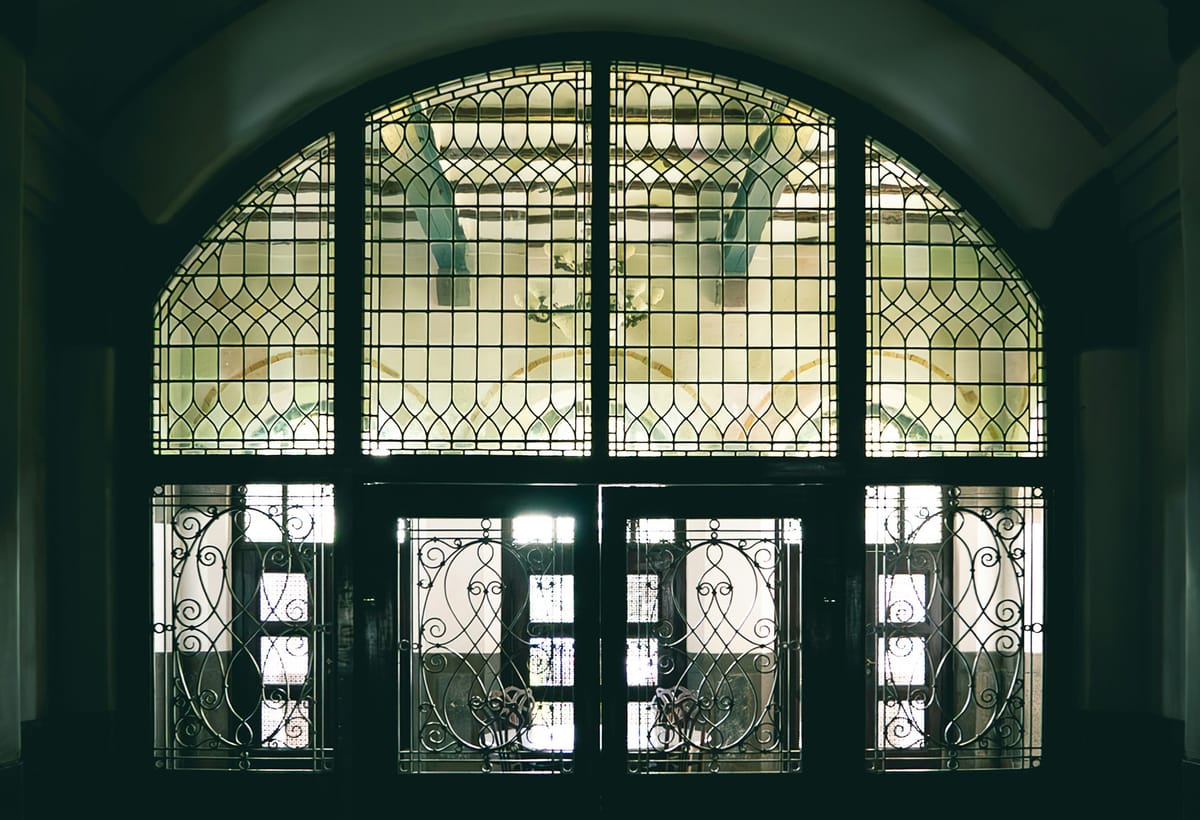Teaching Transparently
Key WHYs for sharing the HOWs of learning

Author's Note: For the next two weeks, I'm going to pilot what I hope to be the new cadence of the newsletter:
- Monday – Development of a relevant big idea
- Wednesday – Example(s) and/or practical action step(s)
- Friday – A pre-weekend media round-up
Please let me know what you think! And thanks to everyone who completed my feedback survey—which is still open if you'd like to help guide this newsletter.
Finally, I'm going to return to including affiliate links to books and other resources in this newsletter, as I seek to make this work sustainable. None of them will be from Amazon. I'll say something more systematic as I find my footing with this new practice.
My most important lesson from leading educational research
There was a lot I found utterly maddening about the decade or so when I was regularly engaging with university institutional review boards (IRBs).
These bodies are tasked with the important work of protecting human research subjects from ethical malpractice on behalf of the people involved in conducting studies. In practice, of course, working with an IRB can become an exercise in box-checking for the applicant and cover-your-ass legalism for the institution.
The best advice I ever received from my peers was that the IRB wouldn't actually make me a more ethical researcher: I needed to start from a place of confidence and inner authority that my research design would appropriately protect—and appropriately empower—participants.
From there, my job was to spend as little time as possible preparing a truthful application that would launch a longer process of "getting to yes" with the IRB.
Of course, all this wrangling is a small price to pay in order to erect guardrails against abusive research. But it does have the ring of mere busywork.
Except. There was one non-negotiable in these applications that consistently shaped and sharpened my thinking. Unless a study's effectiveness explicitly depends on deceiving participants in some way—and if it does, it's subject to much, much tighter scrutiny—researchers have to formulate an age-appropriate, non-expert description of the purpose of the research and how it aims to accomplish that purpose.
In short: When we're doing research on human subjects, we're required to tell participants why we're asking for their participation and how this involvement will help.
Over the years, this lesson led me to a related question: Why aren't teachers required to do the same thing? Sure, any curriculum worth its salt will have learning objectives and a plausible plan for assessing if they've been accomplished. But most learning experiences, as opposed to research projects, are much less rigorous about sharing these essential touchstones with learners.
I think we've made pretty good progress on the why. It's much more common than it used to be to see "What you'll learn"-type statements at the beginning of courses, presentations, and other learning spaces. And if those objectives were written with help from wise guides who understand student motivation, they probably communicate something of the purpose of the learning.
But as a teacher whose subject is teaching and Christian formation, and who is therefore always on the lookout for examples to share, I've noticed we're much, much less likely to say anything about the how of the learning experiences we convene. In other words,
But Kyle, isn't that getting too much in the weeds of teaching? Don't we need to keep the main thing the main thing? Reasonable concerns, both. It's possible to go way too deep in sharing our theories of learning, especially if it's all tell and no show. When we do, it can definitely chew up valuable attention and even distract from the learning that any given pedagogy must always be in service of.
Still, I think the payoffs of pedagogical transparency are well worth the costs. Here's why.
Transparency signals respect and fosters trust
Notwithstanding the sturdy advice to start with start with why, even more important in the context of teaching is to start with building trust. Here's Stephen Brookfield, my favorite authority on teaching, on why this matters:
students want to know that their teachers are genuinely concerned with helping them learn and that classroom activities, grading rubrics, and homework assignments are all designed with that end in mind (p. 42)
I think the same is true in church-based learning settings. Parishioners' time is precious. Even if they're not getting a grade from your series on the Pentateuch, or spiritual practices, or the origins of the Eucharist, they want to know how you'll approach the subject and what else to expect from the experience.
It doesn't have to be complicated. Here's a quick constructionist aside:
Before we begin, let me say a bit about how I want to facilitate this retreat. I'm a big believer that informal creative practices can help put us in touch with what's going on below the surface in our spiritual lives. We learn by doing and reflecting, especially in matters of the soul.
So, yes, we're going to pray together, and I'll say a few words that I hope will inspire you to connect with our theme. But I'm also going to send you off to doodle, or write a poem, or arrange stones by the river. Pay attention the words, images, memories, and feelings that bubble up while you do so, and ponder why that might be the case.
This choice isn't just about addressing the anxiety of folks who want to know the plan. (It me! 🙋🏼♂️) More significantly, it's about subtly communicating that we have come prepared, and we don't intend to hold participants at a distance from the power center of the learning space. We're saying, "You have a right to know what we're up to here."
Transparency helps learners steward their effort and attention
The pedagogies we choose are our embedded mini-theories of how participants will learn in a particular space. Sharing a bit about those theories can help learners self-monitor their engagement and keep themselves on track.
My favorite way that showing our pedagogical hand can help our learners is by pointing out where they might fruitfully spend less time—which also reinforces the trust factor. For example, if our pedagogical commitments tell us that process is more important the product, we might encourage them to spend less time polishing their final paper or presentation and more time documenting the messy process of evaluating possible approaches on their merits.
Again, here's an example of how a brief pedagogical aside (social constructivism + applied pneumatology?) can guide participants to more effective learning:
In this series, we're going to read short texts closely and talk about what they mean for our lives. We'll listen carefully to how our fellow parishioners are resonating with these stories of scripture—or not!—and we'll share our own perspectives.
By talking deeply and honestly about what these stories mean to us, we're doing a lot more than helping ourselves and each other understand and remember them better. We're weaving them into our shared identity as a community of faith.
So try to avoid worrying too much about what you want to say about a story as your groupmates take their turns sharing. Trust that the Holy Spirit will give you the insight you need when it comes your turn to share. The Spirit is especially present to each of us as we receive insight from the diverse perspectives around the table.
Transparency helps learners overcome internal resistance
One last reason + example before I ask for your favorites. I remember exactly where I was when I figured out how important this one was. During my sophomore or junior year of engineering school, I took mechanics of materials. It was a very cool class about how stress and strain work in everyday objects. We got to design a traffic bollard, which involved trying to analyze what happens when a car moving very fast hits a piece of reinforced concrete designed to stop it.
The professor had obviously had some serious pedagogical training. In particular, he was constantly breaking up his lectures to use the active learning standby known as the think-pair-share.
My classmates hated it. Hated. It. "Just give the damn lecture," people would mutter. "I want to hear from the expert, not the hungover kid in the seat next to me," was the general vibe.
I've seen that scene play out in dozens of settings, across disciples. I've heard the sentiment more or less verbatim from priests I deeply, deeply respect. I get it. We just want to sit back and listen. But the annoying truth is that we learn more from effortful processing than passive consumption.
The more we teachers can build in supported opportunities for learners to spin their own gears rather than just watching us do it, the more effective their learning will be. But that's hard, awkward, vulnerable work that reasonable people desperately want to avoid. If we don't talk a bit about how our active learning pedagogies work, it will be very hard to convince learners the discomfort is worth it. "You're not going to like this, but I'm about to ask you to turn to your partner and ____. Here why ..."
These are the three most important examples that emerge from my experience and reading of the literature. As always, I would love to hear your stories too. Where has this kind of transparency working well (or not!) in your teaching and formation settings? I'm planning to work a concrete example from my own teaching on Wednesday.
Full disclosure/context: I'm going to be giving a keynote on pedagogical transparency at a very cool event hosted by Virginia Theological Seminary in September. I'll share more details when I have them—and I hope to see some of you there!


